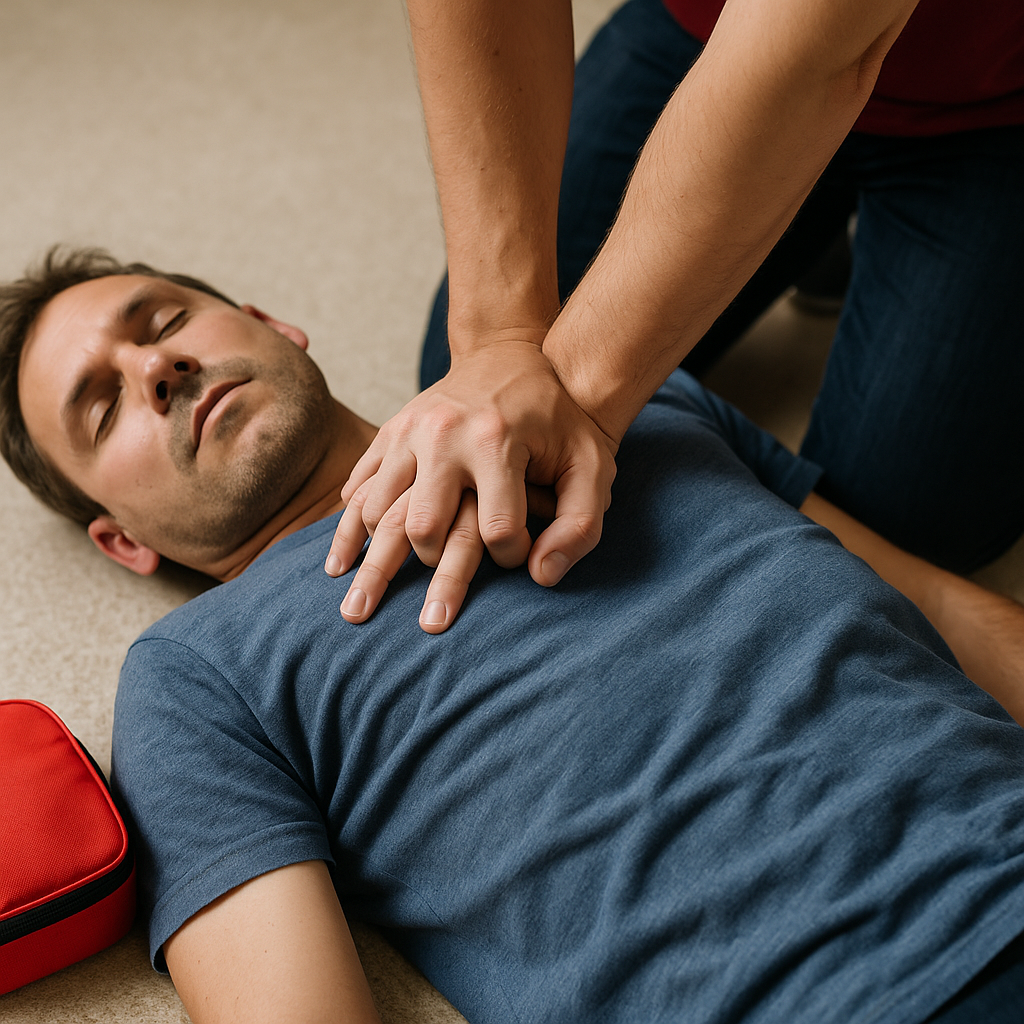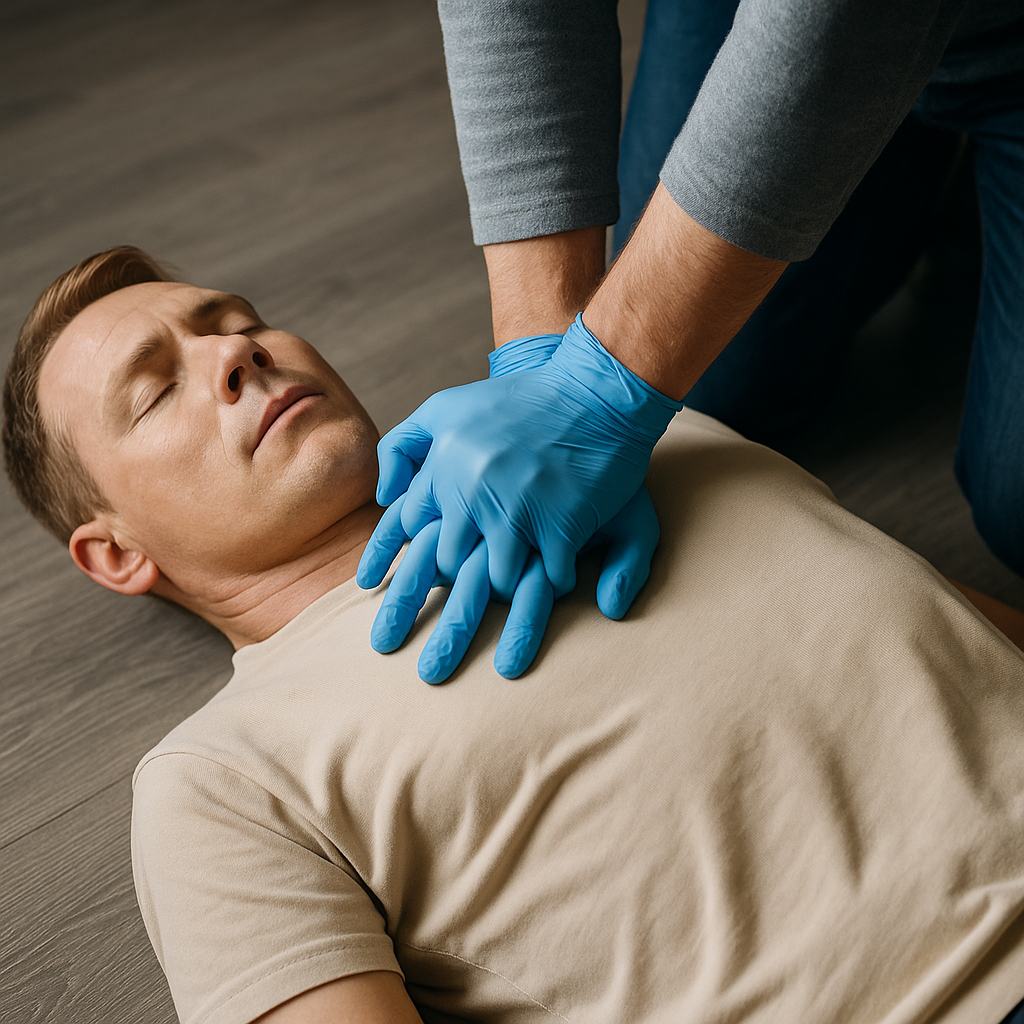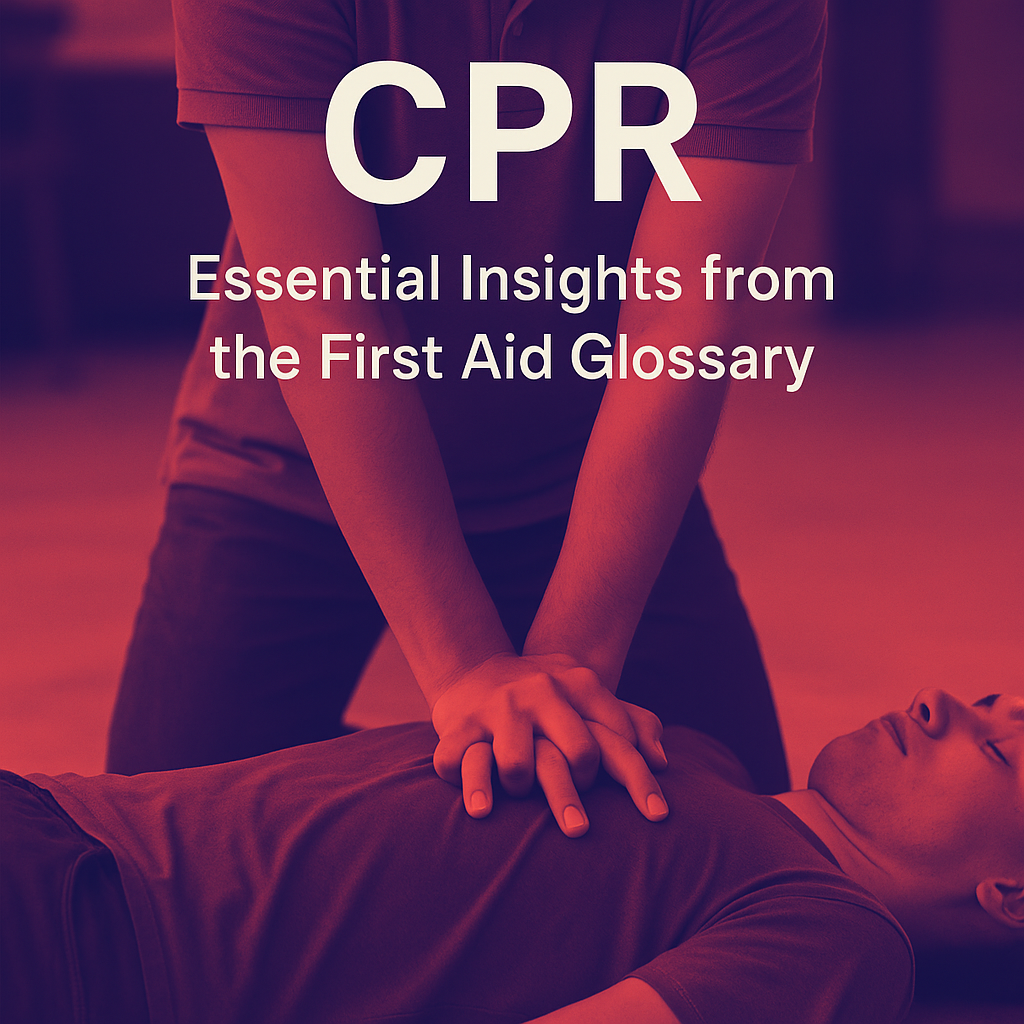- What is CPR?
- Key Facts About CPR
- Causes of Cardiac Arrest
- Symptoms Indicating CPR is Needed
- Step-by-Step Guidance for Performing CPR
- Step 1: Ensure Safety
- Step 2: Check Responsiveness
- Step 3: Call for Help
- Step 4: Check Breathing
- Step 5: Start Chest Compressions
- Step 6: Give Rescue Breaths (if trained)
- Step 7: Continue the Cycle
- Trainer Tips / Safety Advice
- Conclusion
- Key Takeaways:
CPR: Essential Insights from the First Aid Glossary
What is CPR?
Cardiopulmonary Resuscitation (CPR) is a lifesaving medical procedure used in emergencies when someone’s heartbeat or breathing has stopped. CPR combines chest compressions with artificial ventilation to maintain blood flow and oxygenation to vital organs, particularly the brain.
Key Facts About CPR

– Purpose: The primary goal of CPR is to restore partial flow of oxygenated blood to the brain and heart.
– Indications: CPR is indicated in cases of cardiac arrest, drowning, choking, or severe injury leading to unconsciousness.
– Effectiveness: Performing CPR increases the chances of survival and neurological function significantly if performed until emergency medical help arrives.
Causes of Cardiac Arrest
Understanding the common causes can be crucial for early response:
– Heart Diseases: Conditions like heart attacks or arrhythmias.
– Respiratory Issues: Severe asthma attacks or drowning.
– Trauma: Vehicle accidents or other significant injuries.
– Drug Overdose: Certain substances can lead to cardiac arrest.
Symptoms Indicating CPR is Needed

Recognising when to initiate CPR is critical:
– Unresponsiveness: The individual does not respond when shouted at or shaken.
– No Breathing: The person is not breathing or only gasping.
– No Pulse: On checking for a pulse, you cannot feel any heartbeat.
Step-by-Step Guidance for Performing CPR
Here’s the structured procedure for performing CPR, aligned with Australian first aid standards:
Step 1: Ensure Safety
– Check the surroundings to ensure it’s safe for you and the victim.
– Call for help or instruct someone nearby to call 000 for emergency services.
Step 2: Check Responsiveness
– Tap the individual and shout loudly, “Are you okay?”
– If there’s no response, proceed to the next step.
Step 3: Call for Help
– If alone, call 000 and follow the operator’s instructions. If someone else is present, ask them to call for emergency services while you start CPR.
Step 4: Check Breathing
– Tilt the person’s head back slightly, lifting the chin.
– Check for normal breathing (no more than 10 seconds).
– If they are not breathing normally, proceed to CPR.
Step 5: Start Chest Compressions
– Place the heel of one hand in the centre of the chest, on the lower half of the breastbone. Place your other hand on top and interlock your fingers.
– Compress at a rate of 100 to 120 compressions per minute, aiming for a depth of about 5-6 cm.
– Allow complete chest recoil between compressions. Continuous compressions are vital.
Step 6: Give Rescue Breaths (if trained)
– After 30 compressions, give 2 rescue breaths:
– Ensure the airway is open (head tilt, chin lift).
– Pinch the nose, cover the mouth with yours, and give 2 breaths (each lasting about 1 second), watching for the chest to rise.
Step 7: Continue the Cycle
– Repeat the cycle of 30 chest compressions followed by 2 breaths until help arrives or the person shows signs of life (breathing, movement).
Trainer Tips / Safety Advice
1. Practice Regularly: CPR skills can fade, so regular training and practice are essential to maintain your confidence in an emergency.
2. Use an AED: If available, an Automated External Defibrillator (AED) should be used as soon as possible. Follow the audio and visual prompts on the device.
3. Focus on Compressions: If untrained in rescue breaths, performing hands-only CPR with high-quality compressions is still effective and recommended.
4. Avoid Common Mistakes:
– Do not delay CPR to check for a pulse.
– Avoid complacency; ensure that you are performing compressions effectively (rather than relying on others).
Conclusion
Understanding CPR is not just a skill; it is a lifesaving act that can significantly increase survival rates in emergencies. Remember, CPR can be the crucial link between the onset of cardiac arrest and the arrival of professional medical help. Make a commitment to learn and practice CPR, and consider taking an accredited course for hands-on experience. Your readiness to act can make all the difference in an emergency situation.
Key Takeaways:
– Know When to Act: Recognise unresponsiveness, lack of breathing, and absence of a pulse.
– Perform High-Quality CPR: Maintain the correct rate and depth of chest compressions and remember the importance of chest recoil.
– Get Trained: Regular practice and education in CPR techniques prepare you to help save lives confidently.
Stay prepared, stay trained, and potentially save a life!

Leave a Reply